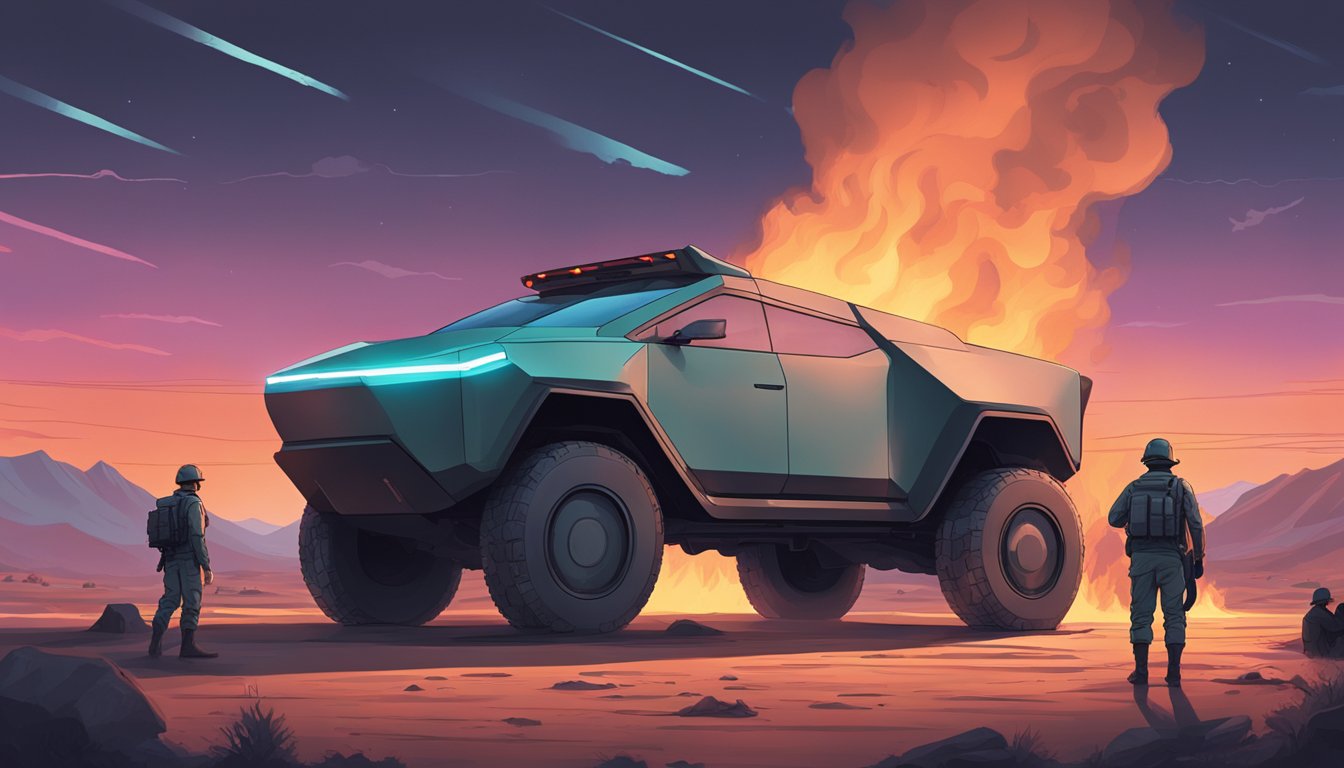A tragic event took place on New Year’s Day outside the Trump International Hotel in Las Vegas, involving Army Special Forces soldier Master Sgt. Matthew Alan Livelsberger.
Reports indicate that Livelsberger, aged 37, fatally shot himself while operating a Tesla Cybertruck, which later ignited in flames.
Military Background
Livelsberger was a valued member of the Army Green Berets, with nearly 19 years of dedicated service.
His military career was marked by numerous honors, including a Bronze Star with Valor, showcasing his commitment and bravery.
Enlisting in 2006, he progressed to the role of team sergeant within the 10th Special Forces Group based at Fort Carson, Colorado.
At a press briefing on Thursday, Sheriff Kevin McMahill of the Las Vegas Police Department confirmed Livelsberger’s connection to the vehicle involved.
Even though the identification of the remains found inside the charred wreckage is pending due to severe fire damage, authorities have gathered key evidence.
Items such as a military ID, passport, dual semi-automatic handguns, an iPhone, a smartwatch, and credit cards were located within the vehicle’s remnants.
Investigation Developments
Detectives traced Livelsberger’s usage of the Cybertruck through a combination of photographic evidence and tracking data.
They established that he had rented the vehicle in Denver and followed his journey to Las Vegas by analyzing the electric charging stations he visited along the route.
Sheriff McMahill affirmed that there was no indication of other people being involved.
They had found tattoos on the remains that appeared to match Livelsberger’s, adding another layer of certainty to the identification.
Inside the Cybertruck, law enforcement officials discovered a troubling assortment of materials, including mortar-style fireworks and gasoline cans, alongside civilian explosive shooting targets.
According to a representative from the Bureau of Alcohol, Tobacco, Firearms, and Explosives, while these components posed a risk, they did not imply the presence of a complex bombing setup.
The arrangement of the items inside the vehicle suggested a lack of organization typically expected from someone with military experience.
Public Concerns and Community Response
This incident in Las Vegas follows another violent occurrence early on January 1 in the United States.
Earlier that same morning, Shamsud-Din Bahar Jabbar, a former active-duty soldier, drove a rental pickup truck into a crowd in New Orleans, resulting in several deaths.
As reports emerged of the Cybertruck engulfed in flames in the hotel valet area, law enforcement quickly moved to address the situation.
During the press conference, Sheriff McMahill responded to rumors linking the two events, which had garnered some attention from figures like Elon Musk.
He clarified that although both Livelsberger and Jabbar had received training at Fort Liberty, North Carolina (formerly Fort Bragg), there was no evidence to support that they knew each other or served together.
Though they had both been deployed in Afghanistan, McMahill emphasized that there were no records of interaction between the two.
Addressing public concern fueled by social media speculation, the sheriff assured the community that there was no ongoing threat connected to Livelsberger or anyone associated with him in Las Vegas.
Livelsberger’s LinkedIn profile highlights his expertise in communications and intelligence, reflecting his varied roles in the military.
Just under two years prior to the incident, he had been promoted to operations sergeant, responsible for leading a Special Forces team of twelve.
His military journey began as an 18X Special Forces candidate in January 2006, continuing actively until March 2011, before transitioning to the National Guard.
During that timeframe, he worked for General Dynamics, specializing in hyperspectral imaging technology for military applications.
In December 2012, Livelsberger returned to active duty, joining the U.S. Army Special Operations Command, which oversees Special Forces units.
His last known assignment entailed managing remote and autonomous systems.
The U.S. Army Special Operations Command has pledged full cooperation with the ongoing investigation but chose to refrain from further comment while the inquiry remains open.
Source: Taskandpurpose.com

